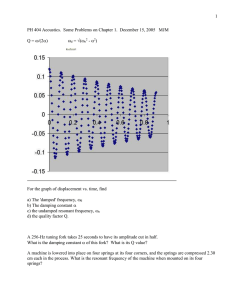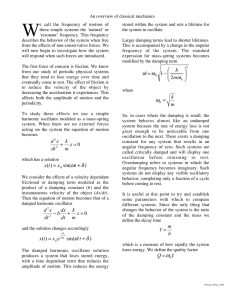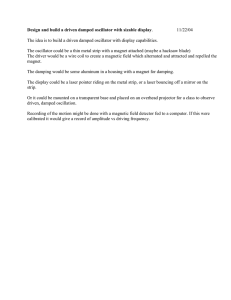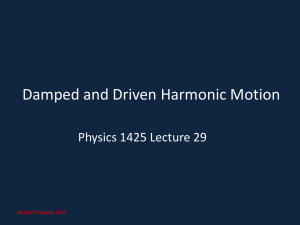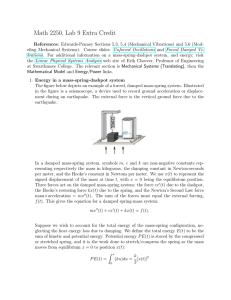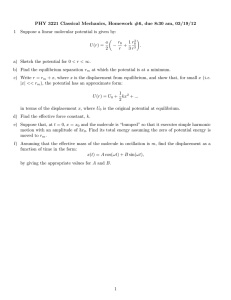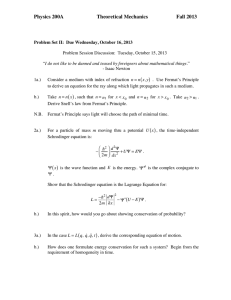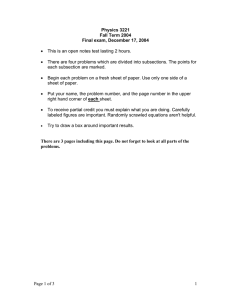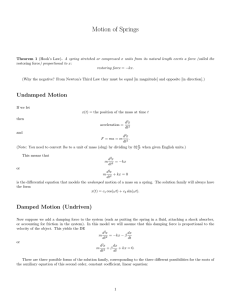Midterm laundry list Spring 2005 MJM April 12, 2005
advertisement
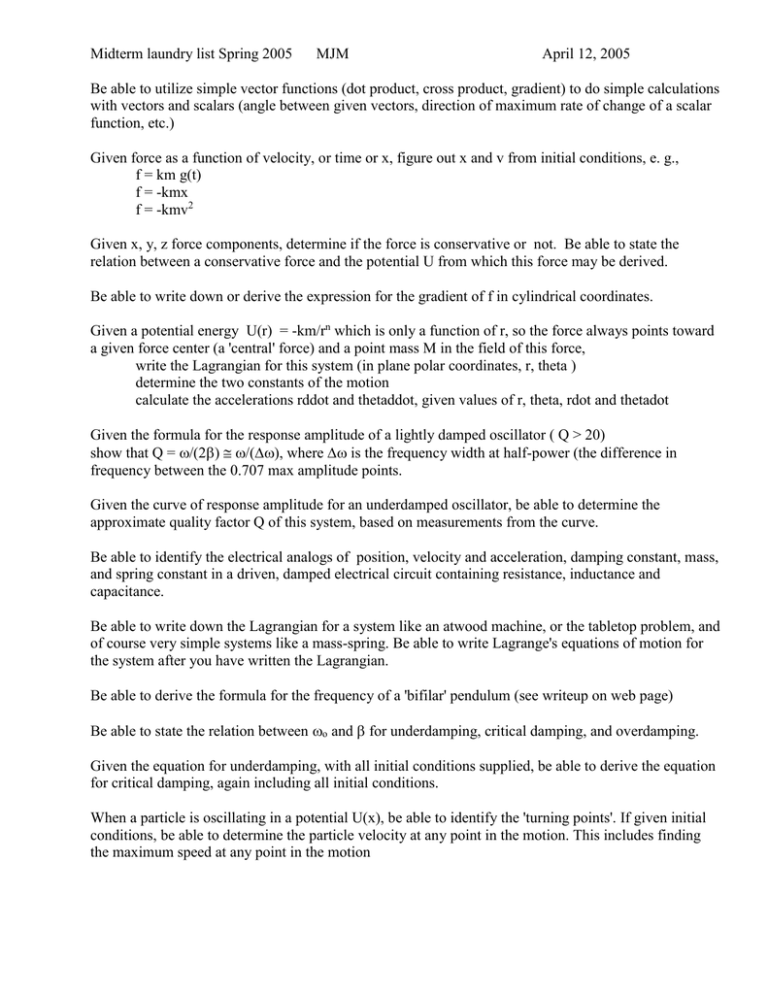
Midterm laundry list Spring 2005 MJM April 12, 2005 Be able to utilize simple vector functions (dot product, cross product, gradient) to do simple calculations with vectors and scalars (angle between given vectors, direction of maximum rate of change of a scalar function, etc.) Given force as a function of velocity, or time or x, figure out x and v from initial conditions, e. g., f = km g(t) f = -kmx f = -kmv2 Given x, y, z force components, determine if the force is conservative or not. Be able to state the relation between a conservative force and the potential U from which this force may be derived. Be able to write down or derive the expression for the gradient of f in cylindrical coordinates. Given a potential energy U(r) = -km/rn which is only a function of r, so the force always points toward a given force center (a 'central' force) and a point mass M in the field of this force, write the Lagrangian for this system (in plane polar coordinates, r, theta ) determine the two constants of the motion calculate the accelerations rddot and thetaddot, given values of r, theta, rdot and thetadot Given the formula for the response amplitude of a lightly damped oscillator ( Q > 20) show that Q = /(2) /(), where is the frequency width at half-power (the difference in frequency between the 0.707 max amplitude points. Given the curve of response amplitude for an underdamped oscillator, be able to determine the approximate quality factor Q of this system, based on measurements from the curve. Be able to identify the electrical analogs of position, velocity and acceleration, damping constant, mass, and spring constant in a driven, damped electrical circuit containing resistance, inductance and capacitance. Be able to write down the Lagrangian for a system like an atwood machine, or the tabletop problem, and of course very simple systems like a mass-spring. Be able to write Lagrange's equations of motion for the system after you have written the Lagrangian. Be able to derive the formula for the frequency of a 'bifilar' pendulum (see writeup on web page) Be able to state the relation between o and for underdamping, critical damping, and overdamping. Given the equation for underdamping, with all initial conditions supplied, be able to derive the equation for critical damping, again including all initial conditions. When a particle is oscillating in a potential U(x), be able to identify the 'turning points'. If given initial conditions, be able to determine the particle velocity at any point in the motion. This includes finding the maximum speed at any point in the motion

